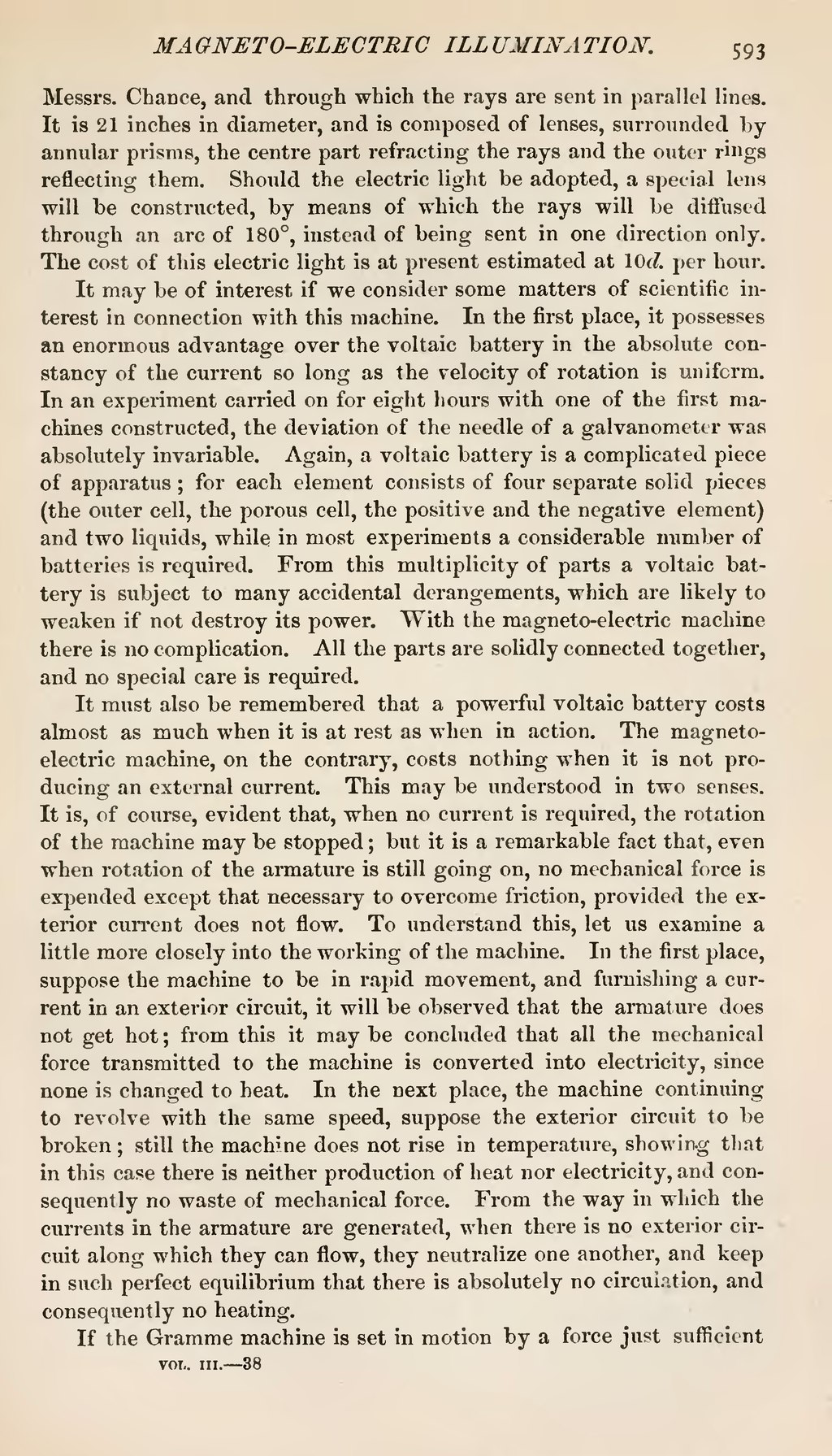Messrs. Chance, and through which the rays are sent in parallel lines. It is 21 inches in diameter, and is composed of lenses, surrounded by annular prisms, the centre part refracting the rays and the outer rings reflecting them. Should the electric light be adopted, a special lens will be constructed, by means of which the rays will be diffused through an arc of 180°, instead of being sent in one direction only. The cost of this electric light is at present estimated at 10d. per hour.
It may be of interest if we consider some matters of scientific interest in connection with this machine. In the first place, it possesses an enormous advantage over the voltaic battery in the absolute constancy of the current so long as the velocity of rotation is uniform. In an experiment carried on for eight hours with one of the first machines constructed, the deviation of the needle of a galvanometer was absolutely invariable. Again, a voltaic battery is a complicated piece of apparatus; for each element consists of four separate solid pieces (the outer cell, the porous cell, the positive and the negative element) and two liquids, while in most experiments a considerable number of batteries is required. From this multiplicity of parts a voltaic battery is subject to many accidental derangements, which are likely to weaken if not destroy its power. With the magneto-electric machine there is no complication. All the parts are solidly connected together, and no special care is required.
It must also be remembered that a powerful voltaic battery costs almost as much when it is at rest as when in action. The magneto-electric machine, on the contrary, costs nothing when it is not producing an external current. This may be understood in two senses. It is, of course, evident that, when no current is required, the rotation of the machine may be stopped; but it is a remarkable fact that, even when rotation of the armature is still going on, no mechanical force is expended except that necessary to overcome friction, provided the exterior current does not flow. To understand this, let us examine a little more closely into the working of the machine. In the first place, suppose the machine to be in rapid movement, and furnishing a current in an exterior circuit, it will be observed that the armature does not get hot; from this it may be concluded that all the mechanical force transmitted to the machine is converted into electricity, since none is changed to heat. In the next place, the machine continuing to revolve with the same speed, suppose the exterior circuit to be broken; still the machine does not rise in temperature, showing; that in this case there is neither production of heat nor electricity, and consequently no waste of mechanical force. From the way in which the currents in the armature are generated, when there is no exterior circuit along which they can flow, they neutralize one another, and keep in such perfect equilibrium that there is absolutely no circulation, and consequently no heating.
If the Gramme machine is set in motion by a force just sufficient
